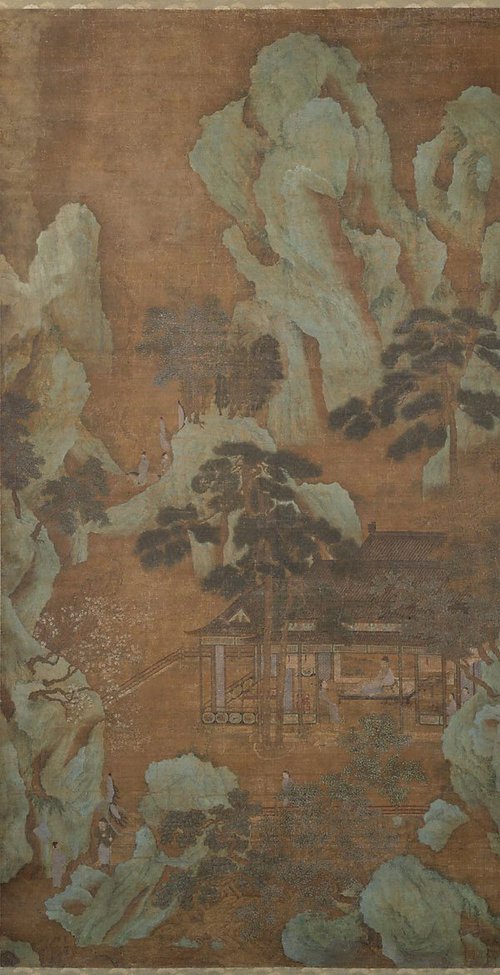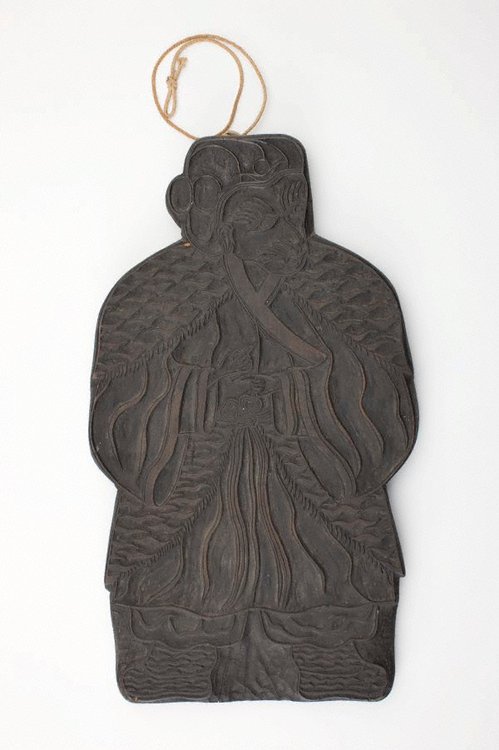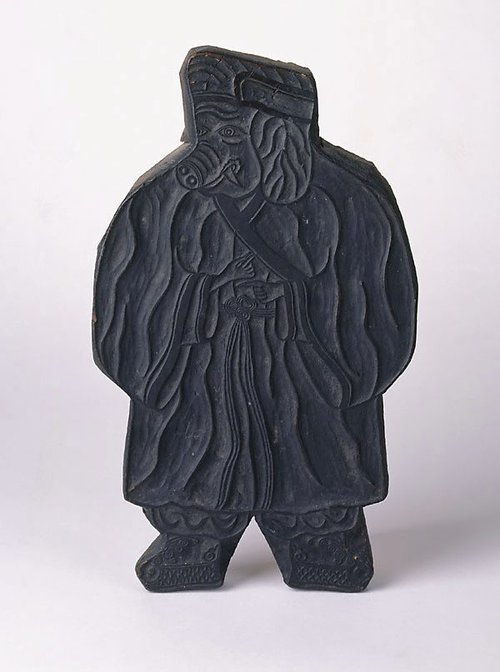

-
Details
- Place where the work was made
-
China
- Period
- Qing dynasty 1644 - 1911 → China
- Date
- 1644-1911
- Media category
- Calligraphy
- Materials used
- ink on paper
- Dimensions
-
167.0 x 72.6 cm overall (variable)
:
a - right scolll - head, 1300 x 298 cm, image
b - left scroll - tail, 1300 x 298 cm, image
a - right scolll - head, 167 x 36.3 cm, scroll
b - left scroll - tail, 167 x 36.3 cm, scroll
- Signature & date
Signed c.l., in Chinese, inscribed in black ink "…Jiecheng Tianzhihe (Tian Zhimei, alia Jiecheng)". Not dated.
Signed l.l., in Chinese, stamped in red ink, "Jiecheng Tianzhimei (Tian Zhimei, alia Jiecheng) [artist's seals]".- Credit
- Gift of Richard Clough 2001
- Location
- Not on display
- Accession number
- 400.2001.a-b
- Copyright
- Artist information
-
Unknown
Works in the collection
- Share
-
-
About
The couplet, written on two narrow pieces of paper or silk, and hung on either side of a large painting or doorway, is one of the most common forms of calligraphic art. The couplets themselves are either taken from Tang and Song poetry or contemporary literary works composed by the calligraphers themselves and their friends.
A couplet is made up of two parts called the head and the tail. In this example, the head reads, "Wandie yunshan mojie hua (Myriad clouded peaks look like a painting by Mojie [Wang Wei, 699-759, a renowned painter and poet of the Tang dynasty])", and the tail reads, "Sishi huaniao duling shi (The flowers and birds of four seasons sound as a poem by Du Fu [712-770, one of the greatest poets of the Tang dynasty)". An inscription is seen on the lower left side of the tail, which reads, "Jiecheng Tianzhihe (Tian Zhimei, alia Jiecheng)". Two seals follow the inscription: "Jiecheng Tian Zhimei (Tian Zhimei, alia Jiecheng)", and "Rencheng hanlin (A member of the Imperial Hanlin Academy in the year of 'rencheng')". It is apparent that the calligrapher of the couplet was a scholar official who served at the time in the highest imperial scholarly institute, the Hanlin Academy during the Qing dynasty. Due to the lack of information, however, the exact date of the year of 'rencheng' is not clear at the moment. It could be dated 1652, 1712, 1772, 1832, and 1892.
Asian Art Department, AGNSW, August 2001
-
Places
Where the work was made
China




